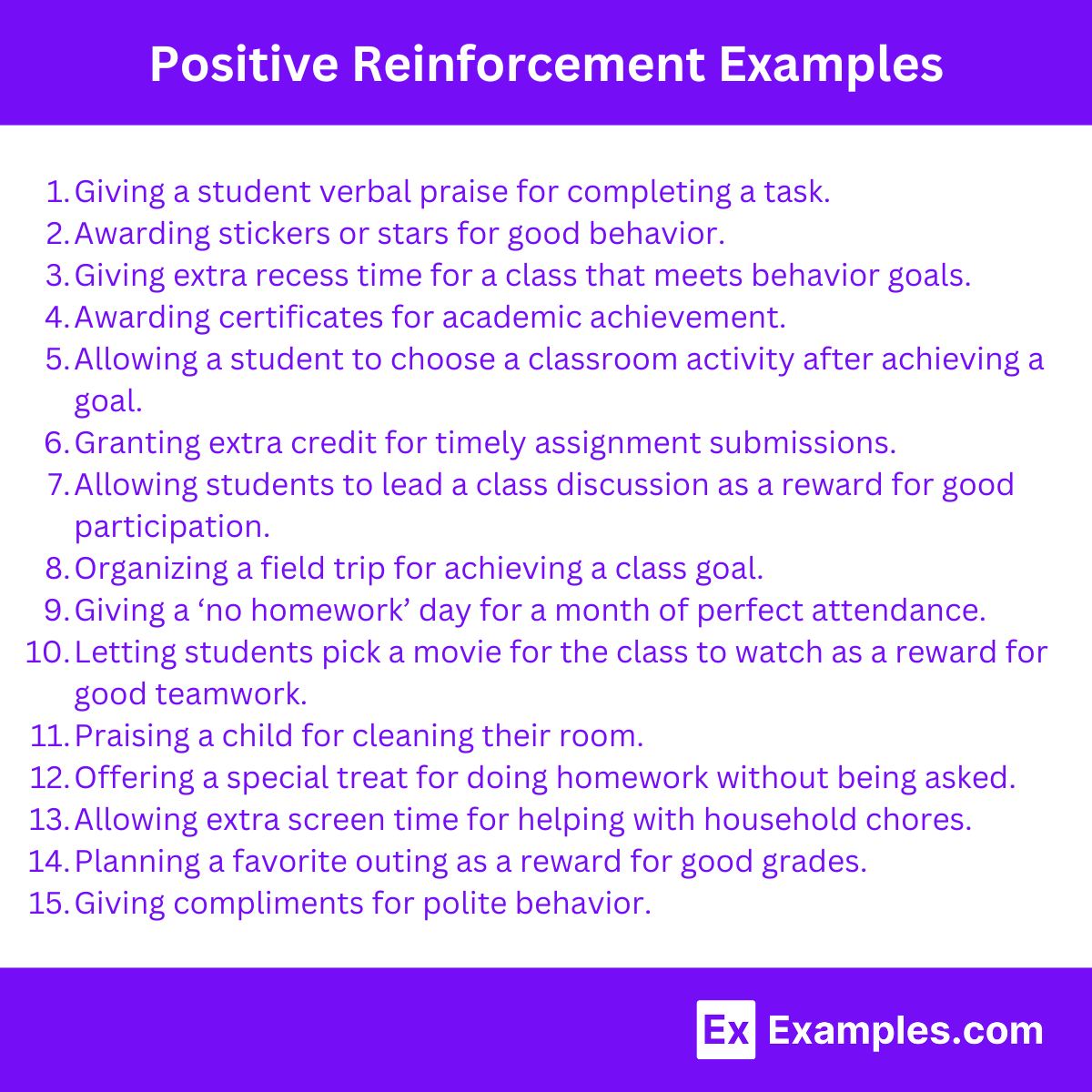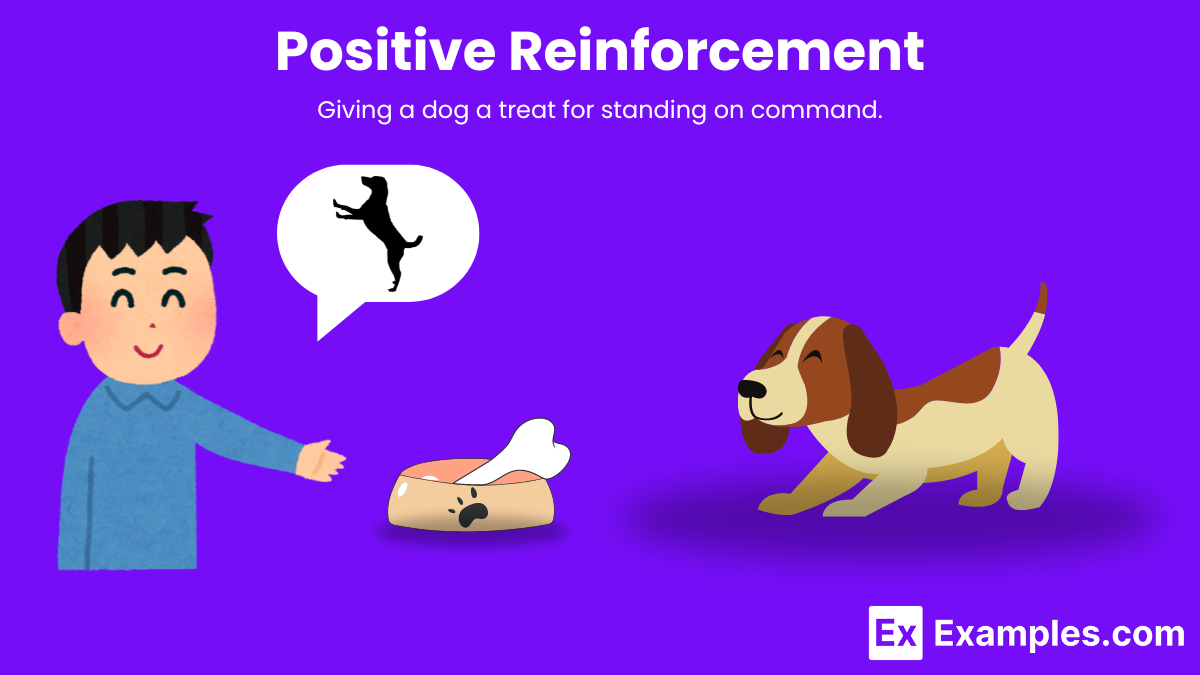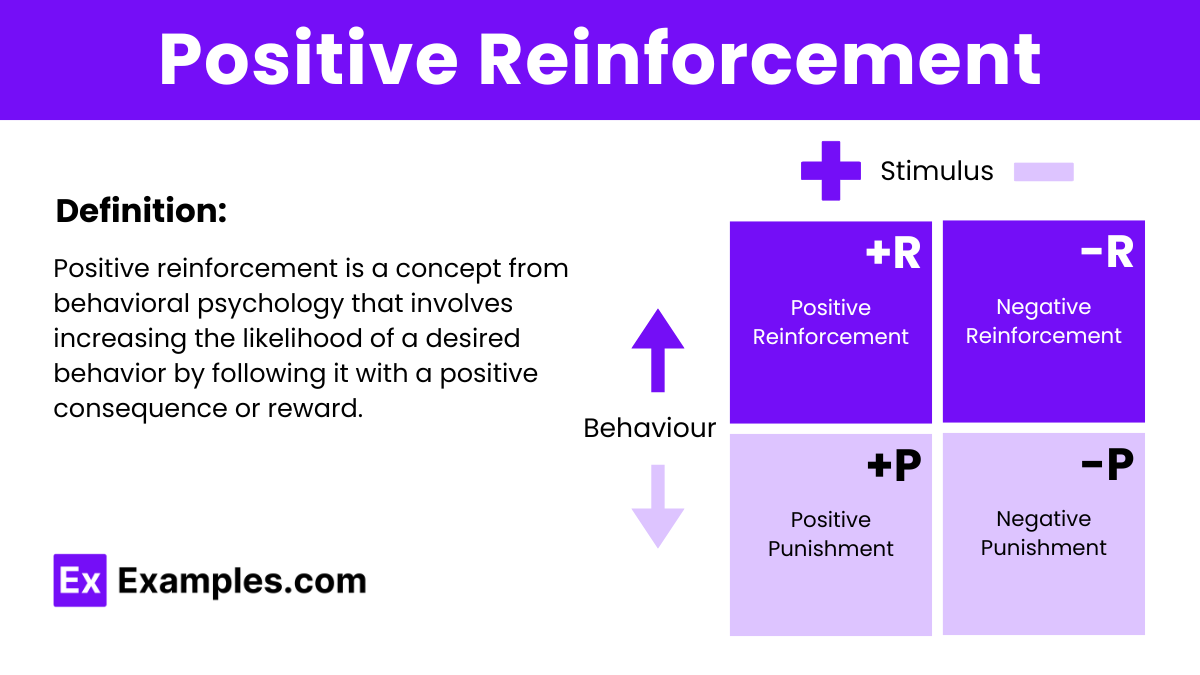Positive reinforcement stands as a powerful method in behavioral psychology, enhancing desired behaviors through rewards or positive outcomes. This technique not only encourages individuals to repeat beneficial actions, but also plays a pivotal role in education, workplace management, and personal development. By understanding and applying positive reinforcement effectively, both educators and leaders can unlock potential and foster a more motivated, engaged environment. This article explores the principles of positive reinforcement, its practical applications, and the profound impact it has on shaping behavior in various settings.
What is Positive Reinforcement?
How does it work?
Positive reinforcement works by rewarding a specific behavior with a positive stimulus immediately after the behavior occurs, which increases the likelihood of that behavior being repeated in the future. For example, praising a child for doing their homework encourages them to continue doing it. The reward, or positive reinforcement, reinforces the desired behavior by providing a pleasing outcome, making it more attractive to repeat. This technique is widely used in both educational settings and behavior modification programs because it builds on natural human desires for positive outcomes, effectively shaping and encouraging desirable behaviors over time.
Positive Reinforcement Examples

- In Education:
- Giving a student verbal praise for completing a task.
- Awarding stickers or stars for good behavior.
- Giving extra recess time for a class that meets behavior goals.
- Awarding certificates for academic achievement.
- Allowing a student to choose a classroom activity after achieving a goal.
- Granting extra credit for timely assignment submissions.
- Allowing students to lead a class discussion as a reward for good participation.
- Organizing a field trip for achieving a class goal.
- Giving a ‘no homework’ day for a month of perfect attendance.
- Letting students pick a movie for the class to watch as a reward for good teamwork.
- In Parenting:
- Praising a child for cleaning their room.
- Offering a special treat for doing homework without being asked.
- Allowing extra screen time for helping with household chores.
- Planning a favorite outing as a reward for good grades.
- Giving compliments for polite behavior.
- Creating a points system where points can be exchanged for privileges.
- Offering a favorite book or toy for going to bed on time.
- Setting up a special playdate as a reward for good behavior.
- Giving a choice of dinner for a week of completed chores.
- Celebrating a ‘Yes Day’ where the child gets to make fun decisions for the day.
- In the Workplace:
- Giving an employee a bonus for meeting sales targets.
- Offering public recognition for a job well done.
- Providing extra vacation days for outstanding performance.
- Allowing telecommuting options for achieving project milestones.
- Hosting a team lunch to celebrate the completion of a project.
- Implementing an ‘Employee of the Month’ program with special perks.
- Providing a parking spot closest to the entrance for the top performer.
- Sending a personal thank-you note from the CEO for innovative ideas.
- Offering professional development opportunities for consistent high performance.
- Giving early leave on Fridays for a month of great teamwork.
- In Sports Coaching:
- Praising an athlete for improving their performance.
- Awarding the best player of the game with a trophy.
- Giving additional playing time for hard work at practice.
- Providing positive feedback during training sessions.
- Offering team outings for reaching team goals.
- Designing personalized gear for achieving personal bests.
- Creating a highlight reel to showcase an athlete’s progress.
- Organizing a meet-and-greet with professional athletes for team motivation.
- Offering a leadership role in the team for demonstrating good sportsmanship.
- Providing a recovery massage session after a particularly hard workout.
- In Personal Relationships:
- Complimenting a partner for a well-cooked meal.
- Thanking a friend for their support during a tough time.
- Giving a small gift as a thank you for a favor.
- Writing a heartfelt note to express appreciation for kindness.
- Planning a special date night as a thank you for partnership in household responsibilities.
- Planning a surprise outing for consistently supportive behavior.
- Giving a ‘day off’ from household duties as a thank you.
- Preparing a favorite meal to show appreciation.
- Offering to take over a disliked chore as a show of gratitude.
- Arranging a special weekend getaway to celebrate an anniversary of good deeds.
- In Animal Training:
- Giving a dog a treat for sitting on command.
- Offering a cat a stroke for using the scratching post instead of furniture.
- Awarding a horse with an apple for following a trail route.
- Using a clicker and treats to teach a bird to sing or perform tricks.
- Providing extra playtime for a pet following commands during training.
- Using specific toys as rewards for successful commands.
- Setting up playdates with other pets for socialization milestones.
- Providing interactive toys for good behavior during vet visits.
- Arranging special grooming sessions as a treat for calm behavior.
- Giving extra cuddle time for learning new tricks.
- In Self-Improvement:
- Treating yourself to a movie after a week of achieving fitness goals.
- Buying a new book after completing a personal project.
- Planning a small vacation for reaching a personal savings goal.
- Enjoying a spa day for maintaining a healthy lifestyle.
- Purchasing new workout gear as a reward for consistent exercise.
- Enjoying a gourmet meal for a month of healthy eating.
- Upgrading gym equipment for achieving fitness benchmarks.
- Allocating a budget for new clothes after losing weight.
- Scheduling a professional photo shoot to celebrate personal
Positive Reinforcement in Psychology
Positive reinforcement is a key concept in behavioral psychology, rooted in the work of B.F. Skinner and his theory of operant conditioning. It involves the introduction of a favorable stimulus immediately following a behavior, which increases the likelihood of that behavior being repeated in the future. For example, praising a child for doing their homework can make them more likely to perform the same action again. This method is widely used in various settings, including education, parenting, and behavioral therapy, to encourage desirable behaviors by associating them with positive outcomes. Positive reinforcement is effective because it helps individuals associate good behaviors with rewards, thereby strengthening those behaviors over time.
Positive Reinforcement Examples for Students
- Verbal Praise: Complimenting students when they answer correctly or participate actively.
- Stickers or Stamps: Giving out stickers or stamps for good work or behavior.
- Certificates: Awarding certificates for achievements or milestones.
- Extra Recess Time: Offering additional time for recess as a reward for good behavior.
- Homework Passes: Giving homework passes for exceptional work or improvements.
- Classroom Points System: Implementing a points system where points can be exchanged for rewards.
- Positive Notes Home: Sending positive notes to parents about their child’s performance or behavior.
- Preferred Activity Choice: Allowing students to choose a class activity after achieving a goal.
- Show and Tell Opportunities: Letting students bring something to share with the class as a reward.
- Classroom Jobs: Assigning desired classroom jobs as a privilege for responsible behavior.
- Library Time: Rewarding with extra time in the school library.
- School Supplies: Providing new school supplies like pens, notebooks, or folders as rewards.
- Lunch with a Teacher or Principal: Offering a lunch session with a teacher or the principal for positive behavior.
- Recognition in Assembly: Acknowledging students’ achievements during school assemblies.
- Seat Swap: Allowing students to choose their seat for a day or week as a reward.
- Technology Time: Giving time on computers or tablets for educational games.
- Reading Corner Time: Allowing extra time in a cozy reading corner.
- Educational Games: Playing educational games as a class reward.
- Class Mascot: Responsibility for a class mascot for excellent behavior or effort.
- Art Supplies: Rewarding with art supplies for creative tasks or projects.
- Group Leader: Choosing a student to lead a group activity based on positive behavior.
- Music Time: Allowing students to pick music for the class to listen to during work time.
- Puzzle or Brain Teasers: Offering puzzles or brain teasers as a break activity.
- Special Pen or Pencil: Giving a special pen or pencil for excellent work or improvement.
- Field Trip Opportunities: Offering a chance to help plan or lead an aspect of a field trip for consistent good behavior or academic performance.
Positive Reinforcement in the Classroom
Positive reinforcement in the classroom is a powerful method for enhancing student motivation and improving behavior by acknowledging and rewarding desired actions and achievements. Educators use various forms of positive reinforcement, such as verbal praise, good behavior charts, awarding stickers, or giving extra privileges, to acknowledge students’ efforts and successes. This approach not only encourages students to repeat beneficial behaviors but also helps in creating a supportive and positive learning environment. By focusing on students’ strengths and rewarding them for their accomplishments, teachers foster a sense of competence and confidence in their students, which can lead to increased engagement and better academic outcomes.
Positive Reinforcement Examples For Kids
- Verbal Praise: Simple words of encouragement like “Great job!” or “I’m so proud of you for sharing your toys today!” can be very effective. This reinforces the behavior you want to see more often.
- Stickers or Stars: Children often enjoy collecting stickers or stars as a visual representation of their accomplishments. You can use a chart where they can add stickers for behaviors like completing homework, helping with chores, or being kind to a sibling.
- Rewards: Offering rewards for a series of good behaviors can be very motivating. For example, after earning a certain number of stickers, they might choose a small toy, a special outing, or a favorite treat.
- Extra Privileges: Earning extra privileges, such as choosing a movie for family movie night or extra playtime before bed, can encourage responsibility and positive behavior.
- Positive Attention: Spending extra one-on-one time doing an activity your child enjoys is a great form of positive reinforcement. This could be playing a game, reading a book together, or going for a bike ride.
- Encouraging Autonomy: Allowing children to make choices about what they wear, which book to read, or what snack to eat can reinforce independence and decision-making.
- Celebration of Achievements: Acknowledging achievements, whether big or small, can boost a child’s confidence and enthusiasm. This can be as simple as a high-five or as festive as a little ceremony.
Importance of Positive Reinforcement
Positive reinforcement is crucial in many contexts, including education, workplace management, parenting, and behavior modification, because of its effectiveness in promoting desired behaviors. Here are some key reasons why positive reinforcement is important:
- Increases Desired Behaviors: By rewarding desired actions immediately after they occur, positive reinforcement makes it more likely that such behaviors will be repeated. This principle is effective across different settings, from encouraging children to do their homework to motivating employees to meet performance targets.
- Enhances Motivation and Engagement: Positive reinforcement boosts individuals’ motivation by providing rewards that are meaningful to them. This increased motivation often results in greater engagement with tasks, whether it’s students participating more actively in class or employees taking on additional responsibilities at work.
- Builds Self-Esteem and Confidence: When people are recognized and rewarded for their efforts, it reinforces their self-esteem and confidence. This is particularly important in educational settings, where developing a positive self-concept can influence a student’s long-term academic and social development.
- Promotes a Positive Learning and Working Environment: Using positive reinforcement helps create an atmosphere of positivity and support, where individuals feel valued and appreciated. This can lead to better social interactions and a more cooperative environment, whether in a classroom or a corporate team.
- Encourages Continual Improvement: Positive reinforcement can foster an ongoing desire for improvement. It encourages individuals to continue refining their skills and behaviors, as they associate these efforts with positive outcomes.
- Reduces Negative Behaviors: By focusing on and reinforcing positive behaviors, there is often a natural decrease in negative behaviors. This approach is more constructive than punitive methods, which can lead to resistance or decreased morale.
- Customizable and Adaptable: Positive reinforcement strategies can be tailored to fit the unique needs and motivations of different individuals, making it a versatile tool in managing behavior and fostering positive changes across diverse groups and settings.
How to Give Positive Reinforcement

- Immediate Rewards: Deliver the reinforcement immediately after the desired behavior occurs. This helps the person make a clear connection between the behavior and the reward.
- Specific Praise: Be specific about what the person did right. Instead of saying “Good job,” you might say, “I really appreciate how you took the time to organize the files so neatly—it makes finding things so much easier.”
- Consistency: Apply positive reinforcement consistently to establish strong habits. Irregular reinforcement can lead to confusion and inconsistency in behavior.
- Appropriate Rewards: Tailor the rewards to the individual’s interests and needs. Rewards can be verbal praise, a tangible item, or privileges, depending on what motivates the person effectively.
- Gradual Change: As the desired behavior becomes more regular, you can gradually reduce the frequency of the rewards, transitioning from continuous to intermittent reinforcement, which can include varying types of rewards and times when they are given.
- Encourage Small Steps: If the goal is complex, acknowledge and reinforce small steps towards the bigger goal. This incremental recognition helps maintain motivation and commitment.
- Positive Environment: Foster a positive, supportive environment that encourages ongoing positive behaviors. This involves not just individual reinforcement but creating a culture that values and recognizes positive actions.
- Avoid Mixed Messages: Ensure that your reinforcements are not contradicting any other messages or expectations. Consistency between what you say and what you reinforce is crucial.
Types
- Social Reinforcements: These involve expressions of approval from others, such as praise, smiles, or compliments. Social reinforcements are often used in educational settings, the workplace, or in family interactions to encourage desirable behaviors.
- Tangible Reinforcements: This type involves giving physical rewards such as toys, money, treats, or other goodies. Tangible reinforcements are particularly effective in situations requiring immediate motivation or response, such as in training animals or rewarding children for good behavior.
- Token Reinforcements: Tokens, points, or other symbolic rewards are given, which can be collected and exchanged for tangible rewards or privileges. This type of reinforcement is commonly used in classrooms in the form of “token economy systems” to manage group behaviors.
- Activity Reinforcements: This involves allowing access to preferred activities as a reward for desirable behavior. For example, a child might be allowed extra playtime or a chance to engage in a favorite hobby after completing homework or chores.
- Natural Reinforcements: These occur directly as a result of the behavior. For example, studying hard leading to good grades, or working out leading to improved health. These are often the most sustainable forms of reinforcement because they inherently satisfy a need or desire.
Positive Reinforcement Theory
Positive Reinforcement Theory is a concept within behavioral psychology based on the idea that behaviors followed by favorable outcomes are more likely to be repeated in the future. This theory, largely developed from B.F. Skinner’s work with operant conditioning, posits that introducing a rewarding stimulus after a desired behavior will increase the likelihood of that behavior occurring again. This approach is widely applied in various settings, including education, parenting, and workplace management, to enhance and sustain desirable behaviors. By consistently applying positive reinforcements—ranging from verbal praise to tangible rewards—individuals can be encouraged to repeat productive actions, making positive reinforcement a key strategy in shaping and modifying behavior.
Positive Reinforcement vs Negative Reinforcement
Positive reinforcement and negative reinforcement are two strategies used in behavioral psychology to encourage certain behaviors, but they operate differently:
- Positive Reinforcement: This involves adding a rewarding stimulus after a desired behavior is exhibited, making the behavior more likely to happen in the future. For example, giving a child a treat after they clean their room encourages them to repeat this behavior.
- Negative Reinforcement: This strategy involves removing an unpleasant stimulus when a desired behavior occurs. The removal of the unpleasant stimulus serves as a reward, reinforcing the behavior. For instance, turning off an annoying alarm when a person wakes up early or stops a behavior that triggers the alarm, reinforcing waking up early to avoid the unpleasant sound.
Both methods aim to strengthen the behavior, but they do so by manipulating different types of stimuli:
- Positive reinforcement adds something pleasant to increase a behavior.
- Negative reinforcement removes something unpleasant to increase a behavior.
Each type of reinforcement can be effective depending on the situation and the individual’s preferences and sensitivities.
Example of Positive vs Negative Reinforcement
Positive Reinforcement
Scenario: A teacher wants to encourage her students to submit homework on time.
- Action: The teacher decides to give stickers to students who submit their homework by the deadline.
- Outcome: Students who receive stickers feel recognized and are motivated to continue submitting homework on time to receive more stickers.
Negative Reinforcement
Scenario: A teenager dislikes hearing their parents remind them repeatedly to do their chores.
- Action: The parents decide that they will stop reminding the teenager to do their chores as soon as they start doing them on their own each day.
- Outcome: The teenager starts doing their chores promptly to avoid the unpleasant nagging, and the parents cease the reminders as soon as the chores are done.
Strategies for Positive Reinforcement
- Immediate Reinforcement: Provide the reward immediately after the desired behavior occurs. This helps to establish a clear connection between the behavior and the reward.
- Consistent Application: Be consistent with the application of positive reinforcement. Consistency helps to reinforce learning and establishes expectations.
- Appropriate Rewards: Tailor the rewards to the individual’s preferences and interests. What is rewarding for one person might not be for another, so understanding what motivates the individual is crucial.
- Variable Schedules of Reinforcement: Once the behavior is established, you can switch to a variable schedule of reinforcement, where rewards are given after unpredictable numbers of responses. This can make the behavior more resistant to extinction than if the reward is given every time.
- Small Steps (Shaping): If the desired behavior is complex, break it down into smaller, manageable parts. Reward progress along the way, which encourages continued effort and commitment to the larger goal.
- Positive Feedback: Along with tangible rewards, give positive verbal feedback. Recognition and praise can be highly effective, especially when it is specific to what was done well.
- Avoid Saturation: If a reward is given too frequently, it can lose its effectiveness. Ensure that rewards maintain their value by not overusing them.
- Combine with Other Methods: Use positive reinforcement in conjunction with other strategies, such as teaching new skills or modifying the environment to encourage behavior.
- Monitor and Adjust: Regularly assess the effectiveness of the reinforcement strategy. Be prepared to adjust the type or frequency of rewards as necessary to maintain effectiveness.
When is Positive Reinforcement Most Effective
- Immediacy: Reinforcement should be given as soon as possible after the desired behavior occurs. The quicker the reinforcement follows the behavior, the stronger the association between the behavior and the reward.
- Consistency: Consistently applying positive reinforcement every time the desired behavior occurs helps to establish clear and strong patterns of behavior. Intermittent reinforcement can also be effective once the behavior is well-established, helping to maintain the behavior over time without over-reliance on rewards.
- Appropriateness: The type of reinforcement should be something that the recipient values. What works as a reinforcer can vary greatly between individuals, so it’s important to choose something that is motivating for the specific person or animal involved.
- Specificity: It’s crucial to be clear about which behaviors are being reinforced. General praise can be less effective than reinforcing specific actions or behaviors, as it helps the recipient understand exactly what actions are being rewarded.
- Gradual Escalation: When teaching complex behaviors, starting with simple tasks and gradually increasing to more complex ones can be more effective. Reinforcing each step towards the final behavior helps build competence and confidence.
- Variety: Changing up the types of rewards can prevent boredom and decrease the likelihood of the reward losing its reinforcing power. Keeping the reinforcement appealing and engaging is crucial for sustained motivation.
- Positive Environment: Reinforcement is more effective in a supportive and encouraging environment. If the overall atmosphere is negative or punitive, the impact of positive reinforcement can be diminished.
Excessive positive reinforcement can decrease motivation, making rewards seem less valuable and reducing their effectiveness.
Positive reinforcement may fail if rewards are irrelevant, inconsistent, or not aligned with personal values.
Yes, positive reinforcement effectively promotes desired behaviors by linking them to rewarding outcomes.
Positive reinforcement boosts motivation and enjoyment, reinforcing behaviors through rewards that provide satisfaction and recognition.
The opposite of positive reinforcement is punishment, which aims to decrease undesired behaviors by adding or removing stimuli.
Set personal goals, reward yourself for achieving them, and use self-praise and treats to maintain motivation.
Yes, consistent positive reinforcement can enhance self-esteem by validating efforts and achievements.
Offer sincere praise, meaningful rewards, and recognition in response to specific actions or achievements.
Behaviors that are constructive, goal-oriented, and align with expected norms typically gain positive reinforcement.
Recognize and appreciate your partner’s efforts and achievements, and express gratitude to reinforce positive behaviors.



